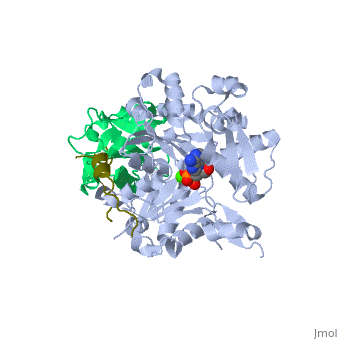Profilin
FunctionProfilin (PFN) enhances actin growth by binding to monomeric actin, thus becoming profilactin. PFN catalyzes the exchange of poorly polymerizing ADP-actin to readily polymerizing ATP-actin[1]. PFN binds to poly-L-proline, thus it recruits the actin monomers to proline-rich proteins like VASP, which enhance the growing of actin polymers. PFN-I is expressed in most tissues while PFN-II is expressed in brain and kidney. PFN was found in all eukaryotes. DiseasePFN from birch, peanut and other plants is a major allergen[2]. 3D Structures of profilin
|
| ||||||||||
ReferencesReferences
- ↑ Nejedla M, Sara S, Sulimenko V, de Almeida FN, Blom H, Draber P, Aspenstrom P, Karlsson R. Profilin connects Actin Assembly with Microtubule dynamics. Mol Biol Cell. 2016 Jun 15. pii: mbc.E15-11-0799. PMID:27307590 doi:http://dx.doi.org/10.1091/mbc.E15-11-0799
- ↑ Alvarado MI, Jimeno L, De La Torre F, Boissy P, Rivas B, Lazaro MJ, Barber D. Profilin as a severe food allergen in allergic patients overexposed to grass pollen. Allergy. 2014 Dec;69(12):1610-6. doi: 10.1111/all.12509. Epub 2014 Oct 3. PMID:25123397 doi:http://dx.doi.org/10.1111/all.12509
